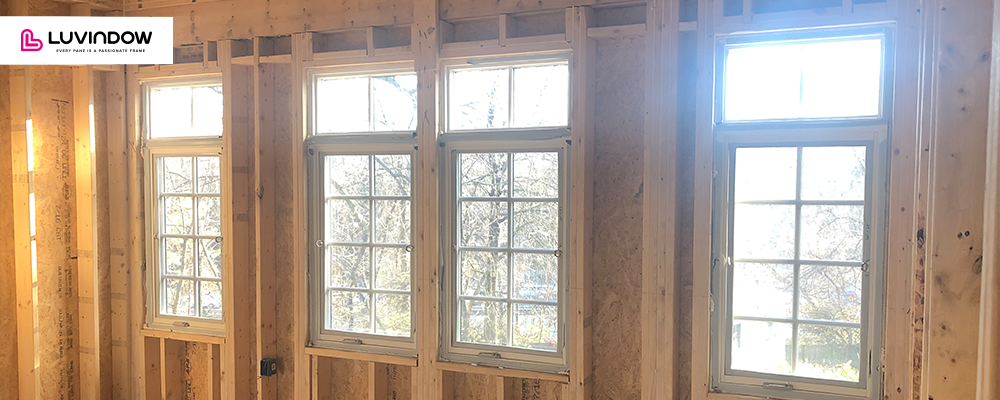Choosing Energy Efficient Windows and Doors for Northern Homes
Living in the northern region can be a challenge when it comes to maintaining a comfortable and energy-efficient home. One of the crucial factors in achieving this is selecting the right windows and doors that can withstand the harsh weather conditions, provide insulation, and promote energy efficiency. In this article, we will provide tips on how to choose energy-efficient windows and doors for northern homes.
Importance of Energy Efficiency in Northern Homes
Northern regions experience extreme temperatures and weather conditions, from freezing cold winters to hot and humid summers. This can lead to high energy consumption in homes, resulting in increased energy bills and environmental impact. Investing in energy-efficient windows and doors can help reduce energy consumption and costs, provide insulation, and create a more comfortable living environment.
When selecting energy-efficient windows and doors for northern homes, it is essential to look for energy efficiency standards and certifications. Some of the certifications to consider include:
ENERGY STAR: ENERGY STAR is a certification program that identifies energy-efficient products, including windows and doors. ENERGY STAR certified products meet specific energy efficiency standards and can help reduce energy costs and greenhouse gas emissions.
National Fenestration Rating Council (NFRC): The NFRC is a non-profit organization that provides performance ratings for windows, doors, and skylights. Products with NFRC labels can help homeowners make informed decisions about energy-efficient products.
Passive House: Passive House is a voluntary certification program that promotes energy-efficient buildings. Passive House-certified products use specific design principles and technologies to minimize energy consumption and reduce environmental impact.
Materials for Energy-Efficient Windows and Doors
When it comes to choosing materials for windows and doors in northern areas, it's important to consider their durability, insulation properties, and ability to withstand harsh weather conditions. Here are some materials that are commonly used in energy efficient windows and doors:
Vinyl: Vinyl is a popular choice for windows and doors because it's affordable, low-maintenance, and energy efficient. Vinyl frames provide good insulation and are resistant to moisture, which is important in northern areas where temperatures can drop below freezing. However, vinyl frames can warp or crack over time, especially if they are exposed to extreme temperature fluctuations.
Fiberglass: Fiberglass frames are strong, durable, and energy efficient. They are resistant to moisture, rot, and pests, which makes them ideal for northern climates. Fiberglass frames also expand and contract at a similar rate to glass, which helps prevent air leaks. However, fiberglass frames are more expensive than vinyl and can be difficult to find in some areas.
Wood: Wood frames are a classic choice for windows and doors because of their natural beauty and excellent insulation properties. Wood frames provide good thermal performance, but they require more maintenance than vinyl or fiberglass frames. Wood frames can also be vulnerable to moisture, which can lead to rot and decay over time.
Aluminum: Aluminum frames are strong, lightweight, and low-maintenance. They are also highly resistant to moisture, making them a good choice for northern areas where weather conditions can be harsh. However, aluminum frames are not as energy efficient as vinyl or fiberglass frames, and they can conduct heat and cold, which can lead to energy loss.
Steel: Steel frames are very strong and provide excellent security, but they are not as common in residential windows and doors. They are also not as energy efficient as other materials and can be prone to rust if not properly coated.
In terms of metal materials, aluminum and steel are both strong and durable options. Aluminum is generally more affordable and lightweight than steel, but it is not as strong. Steel, on the other hand, is heavier and more expensive than aluminum, but it provides better security and durability. However, both aluminum and steel can conduct heat and cold, which makes them less energy efficient than other materials.
Window and Door Openings
The type of window and door opening can also impact energy efficiency in northern homes. Here are some options to consider:
Double-hung windows: Double-hung windows are a popular choice for northern homes as they provide good ventilation and insulation. They have two sashes that can be opened and closed, allowing for better control of airflow and temperature.
Casement windows: Casement windows are another energy-efficient option for northern homes. They have a tight seal and open outward, allowing for better ventilation and airflow.
Insulated doors: Insulated doors are recommended for northern homes to prevent heat loss and provide better insulation. Lift and slide doors and tilt and turn windows are popular options for energy-efficient doors.
Conclusion:
Choosing the right windows and doors for northern homes is crucial for energy efficiency, comfort, and cost savings. Selecting the appropriate materials, openings, and certifications can help homeowners achieve their goals. At [factory direct windows and doors], we offer a wide range of energy-efficient windows and doors suitable for northern homes. Contact us to learn more about our products and services.



 Picture Windows
Picture Windows Single Double Hung Windows
Single Double Hung Windows Tilt & Turn Windows
Tilt & Turn Windows Sliding Windows
Sliding Windows Bi-Fold Windows
Bi-Fold Windows Gliding Patio Doors
Gliding Patio Doors Bi-Fold Doors
Bi-Fold Doors Lift and Slide
Lift and Slide  Entry Doors
Entry Doors Swinging Doors
Swinging Doors